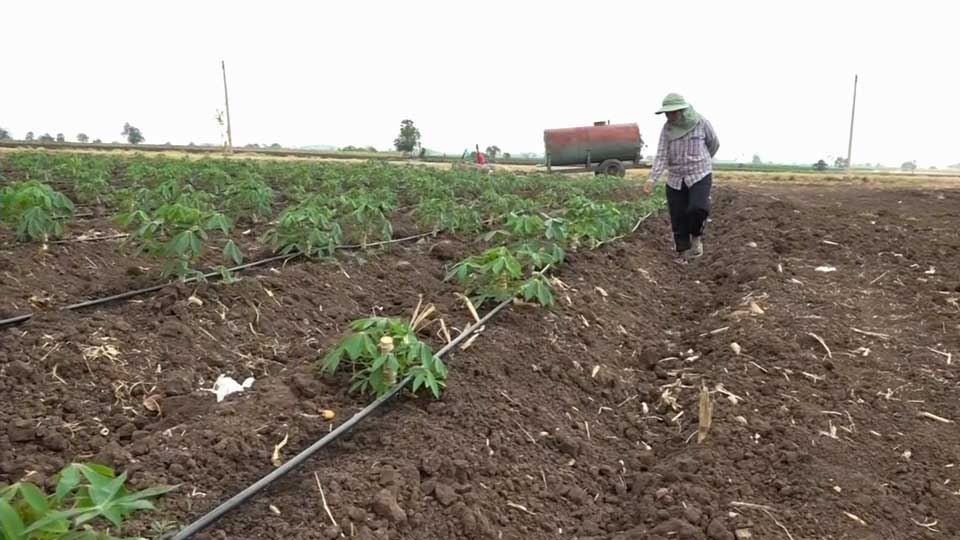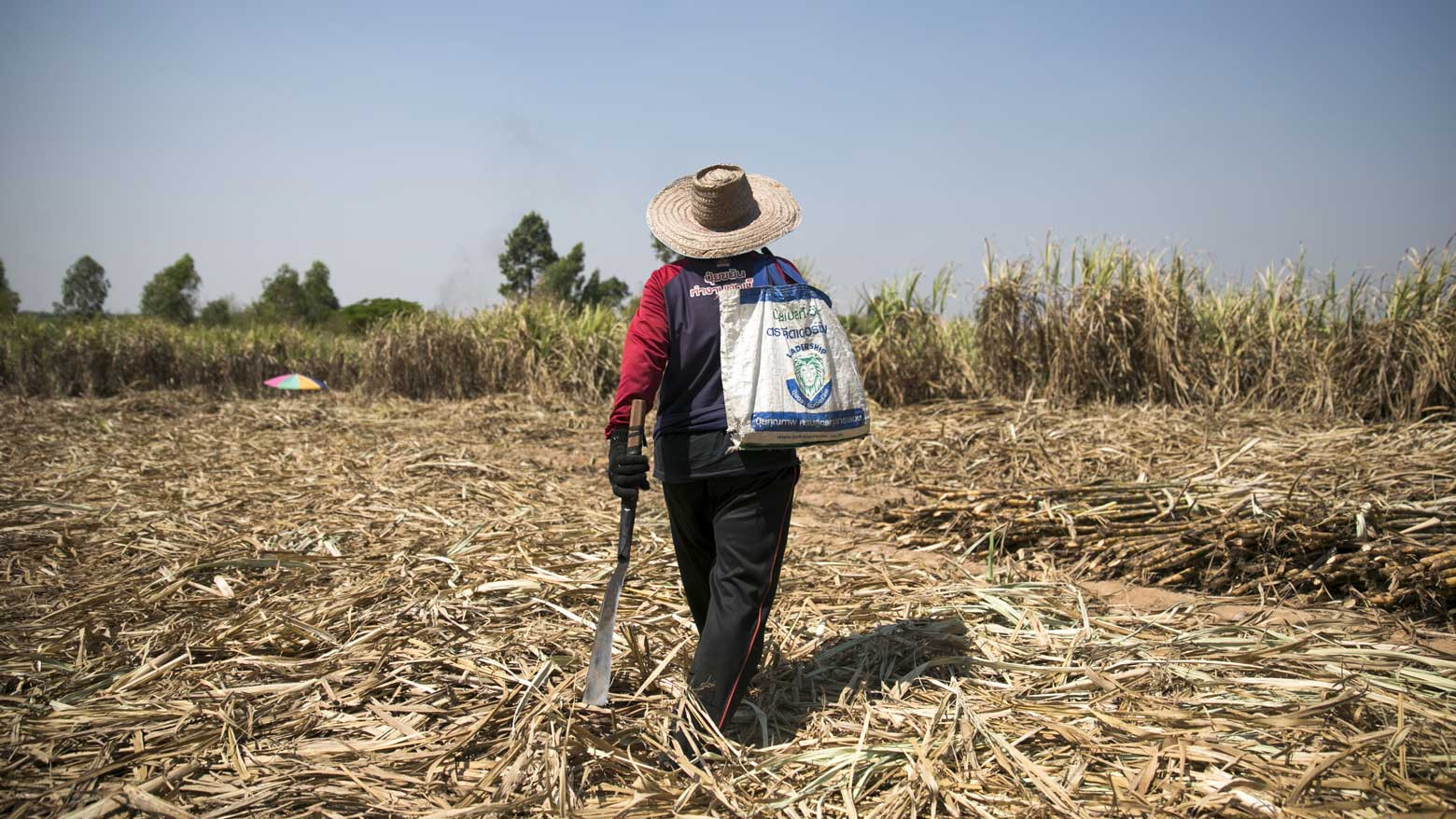Sugarcane crushing season is coming to an end in Thailand, and it has been a tough year for the farmers. Unusually dry weather means the country’s output has plummeted by about 40 percent according to the country’s Cane and Sugar Board.
Small-scale sugarcane farmers like 43-year-old Mali Ditri face an increasingly difficult choice. Mali oversees 79 acres of farmland in the agricultural heartland of Nakhon Sawan province. The area got about 1,200 millimeters of rainfall in 2005, according to the Thai Meteorological department. Last year it got just 800 millimeters.
"With normal rainfall, I was able to produce up to about 50 tons of sugarcane per acre," she says. "But now, with the drought period getting worse over the past few years, I can only produce up to half the usual amount."
Sugarcane takes second place
Mali has decided she can no longer bank on the weather and is turning to a new crop. About 70 percent of the land she once used for sugarcane farming is now planted with cassava, a more drought-tolerant and, these days, more profitable crop.
"With sugarcane you must water it consistently, but cassava needs to be watered just twice per growth cycle," says Mali.
Other sugarcane farmers have had the same idea and are switching to the root vegetable — some a few acres at a time, others converting full-scale.
"It's becoming a trend to turn toward the cultivation of cassava. There's very little sugarcane left in this province now," says Mali.

A dry outlook
The shunning of sugarcane is causing anxiety further down the supply chain. Nathapun Siriviriyakul runs the Kaset Thai International Sugar Corporation, which turns the cane into sugar, molasses, fertilizers and energy. He is not optimistic about the outlook for the industry.
"If these farmers can reap profits from growing sugarcane, they'd keep on cultivating it," he says. "But once their profits go, they walk away. And if they walk away, our factory will suffer. We'll be left with nothing."
To encourage farmers to stay with sugarcane, the company built in 2017 a 15-kilometer irrigation channel to connect drought-prone farming areas to the Chao Phraya, one of Thailand's largest rivers. He says the effort has paid off — to an extent. They've helped farmers produce several more tons of cane than they would have been able to without the extra irrigation, but it's not as efficient as rainfall and the numbers are still not adding up.
"Even if we try to add more water ourselves, the amount of sugarcane cultivated would not be the same as a season with full rainfall," he says.
The dry weather continues to challenge the global sugar sector, and those who have stayed in the supply chain are left at the mercy of mother nature and the vicious cycle of human activity that's driving the charges. The sweet crop is facing a bitter future, and may turn out to be a key gauge of the climate crisis.

